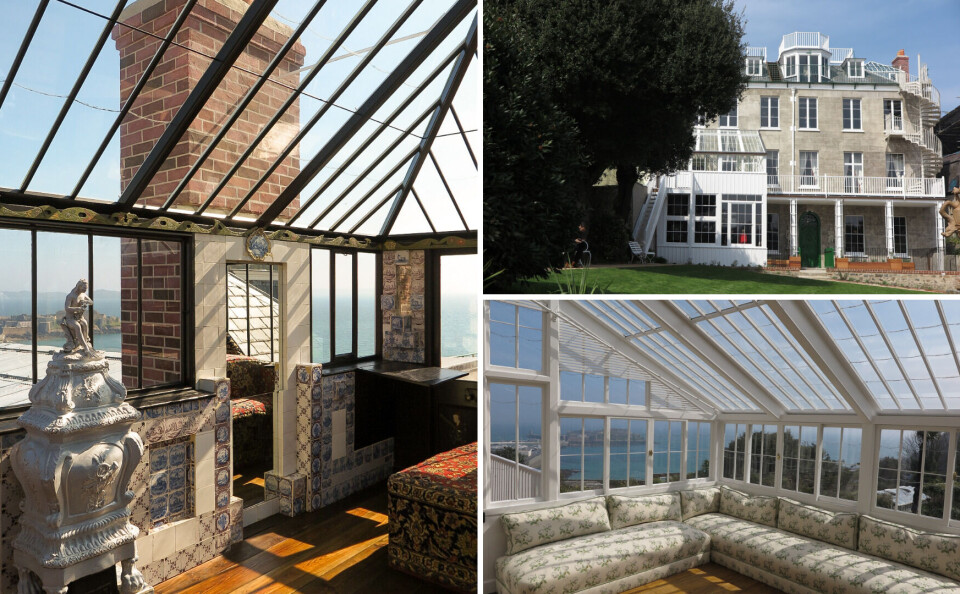-
Duck Cold! Four French phrases to use when it is freezing outside
We remind you of French expressions to use to describe the drop in temperature
-
When and why do we say le moral dans les chaussettes?
We explore this useful expression that describes low spirits
-
The origins and meaning of tirer les marrons du feu
As Christmas approaches, we look at a phrase to describe someone who takes advantage of a situation
How the Revolution gave France a head for heritage conservation
Today, France leads the way in looking after old buildings and sites, but it is largely due to the country’s tumultuous past

France has many heritage sites but their excellent preservation has as much to do with the ‘vandalism’ of the Revolution as with the efforts of the monument historique scheme.
Riccardo Giordano, one of the 32 architectes en chef des monuments historiques (ACMH), the official body which oversees work on historic sites, said: “France was one of the places where the idea of conservation of a monument was born, in its modern terms.
“There’s the Age of Enlightenment, but mostly it is the result of the demolition and destruction of the French Revolution, and the looting of ancient buildings during that period.”
‘Vandalism’
People sought to erase the visual reminders of the Ancien Régime but the ruthless attitude towards culturally significant monuments, especially those linked with feudalism, did not sit well with everyone.
“This vandalism progressively created a sort of conscience of the importance of the losses, especially in terms of their artistic value,” said Mr Giordano.
Abbé Grégoire (1750-1831), a leading figure in the Revolution, came to the defence of monuments in 1794, describing their destruction as vandalisme.
Victor Hugo (1802-1885) also condemned their demolition in his poem ‘La bande noire’, a name given to speculative, asset-stripping organisations in the 1790s that bought old buildings at knockdown prices to demolish and sell off the building materials.
He demanded a law for the protection of monuments.
Listing priority monuments
In 1830, the minister of the interior proposed the post of inspector of historic monuments, which was assigned to the writer Prosper Mérimée four years later.
His mission was to classify the buildings and to distribute funds for their maintenance and restoration.
In 1837, the Commission des monuments historiques was formed and Mérimée asked each prefect to produce a list of local monuments that they felt needed priority restoration.
Published in 1840, the list comprised 1,082 historic monuments, including 934 buildings as well as objects such as the Bayeux Tapestry.
Competition to recruit architects
The commission delegated the most important restoration work to specialist architects, setting up the ACMH.
The first competition to recruit architects for it took place in 1893, and the method is still practised today.
Competitions to become a member take place every seven to eight years, coinciding with the French administrative calendar, and it is often considered one of the most challenging processes in the civil service.
Attached to the Culture Ministry and under the directeur général des patrimoines, an architecte en chef des monuments historiques is responsible for assessing protected heritage, providing advice and sharing expertise.
They are leaders in conservation and restoration, often overseeing projects on historic monuments.
Unique place in French administration
“We have a function and place in the French administration that is quite peculiar, if not unique, because we can work for other clients too,” said Mr Giordano.
“This dates back to the 19th century. Most of us work nearly exclusively on historical monuments or ancient buildings, but we may also work for clients other than the state. And then when we intervene for the state, we are civil servants.”
To become an architecte en chef, individuals are expected to have a degree in architecture, and most also opt for an education at the prestigious Ecole de Chaillot (DSA) in Paris, as well as many years of work experience on monuments of historic importance.
At one stage, the ACMH was the only organisation with authority to oversee protected heritage projects.
Monument historique designation
The monument historique designation can be conferred on buildings, whole sites or specific objects, covering everything from castles and cathedrals to archaeological remains and religious art.
Categories have now been expanded to include industrial, scientific and technical heritage, such as factories, railway infrastructure and cars.
Read more: Owning a French monument historique has its advantages
Excluding larger projects, such as Paris’s Grand Palais or the Château de Villers-Cotterêts in Picardy, the average annual budget assigned to the upkeep and restoration of historic monuments reaches, on average, nearly €300million.
Victor Hugo’s house
Mr Giordano became an architecte en chef after the 2018 competition and covers the Ain, Isère, Loire and Savoie departments, among others.
While his work has included a range of exciting projects, one stands out so far – and it is a fitting one.
“I would say it’s the restoration of the home of Victor Hugo on the island of Guernsey,” he said.
Hauteville House was the writer’s home for nearly 15 years while in exile and where he wrote some of his most famous works, including Les Misérables.
Its interior was largely designed by Hugo himself and sympathetic renovation in 2018, including to its famous glazed look-out over St Peter Port, saw many of his personal touches restored.
Related articles
Discover mediaeval underground cave churches in Nouvelle-Aquitaine
‘First Plus Beaux Villages de France needs homes not more shops’
PHOTOS: See the 14 places vying to be France’s most loved monument
























